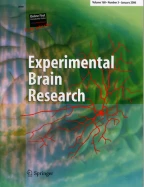Abstract
The expression of corticotrophin-releasing factor (CRF) receptors in cerebral arteries and arterioles suggests that CRF may modulate cerebral blood flow (CBF). In the present study, the effects of CRF, CRF-like peptides and the CRF broad spectrum antagonist DPhe-CRF on CBF have been investigated under normal physiologic conditions and in the margins of focal ischaemic insult. The experiments were carried out in anaesthetised and ventilated rats. Changes in CBF after subarachnoid microapplication of CRF and related peptides were assessed with a laser-Doppler flowmetry (LDF) probe. In the ischaemic animals, agents were injected approximately 60 minutes after permanent middle cerebral artery occlusion (MCAo). Microapplication of CRF and related peptides in normal rats into the subarachnoid space produced sustained concentration-dependent increases in CBF. This effect was attenuated by co-application with DPhe-CRF, which did not alter CBF itself. A second microapplication of CRF 30 min after the first failed to produce increases in CBF in normal animals. Microapplication of CRF in the subarachnoid space overlying the ischaemic cortex effected minor increases in CBF whereas D-Phe-CRF had no significant effect on CBF. Activation of the CRF peptidergic system increases CBF in the rat. Repeated activation of CRF receptors results in tachyphylaxis of the vasodilator response. CRF vasodilator response is still present after MCAo in the ischaemic penumbra, suggesting that the CRF peptidergic system may modulate CBF in ischaemic stroke.
Similar content being viewed by others
References
Al-Noaemi MC, Edwarson JA, Hughes D (1982) Corticotropin-releasing factor (CRF) stimulates release of peptides from the intermediate lobe of the rat pituitary gland. J Physiol 332:85–86
Behan DP, Khongsaly O, Ling N, De Souza EB (1996) Urocortin interaction with corticotropin-releasing factor (CRF) binding protein (CRF-BP): a novel mechanism for elevating “free” CRF levels in human brain. Brain Res 725(2):263–267
Chalmers DT, Lovenberg TW, De Souza EB (1995) Localization of novel corticotropin-releasing factor receptor (CRF2) mRNA expression to specific subcortical nuclei in rat brain: comparison with CRF1 receptor mRNA expression. J Neurosci 15(10):6340–6350
Chalmers DT, Lovenberg TW, Grigoriadis DE, Behan DP, De Souza EB (1996) Corticotropin-releasing factor receptors: from molecular biology to drug design. Trends Pharmacol Sci 17:166–172
Dautzenberg FM, Hauger RL (2002) The CRF peptide family and their receptors: yet more partners discovered. Trends Pharmacol Sci 23(2):71–77
Dawson DA, Hallenbeck JM (1996) Acute focal ischemia-induced alterations in MAP2 immunostaining: description of temporal changes and utilization as a marker for volumetric assessment of acute brain injury. J Cereb Blood Flow Metab 16(1):170–174
Dieterich KD, Lehnert H, De Souza EB (1997) Corticotropin-releasing factor receptors: an overview. Exp Clin Endocrinol Diabetes 105(2):65–82
Latchman DS (2002) Urocortin. Int J Biochem Cell Biol 34(8):907–910
Lei S, Richter R, Bienert M, Mulvany MJ (1993) Relaxing actions of corticotropin-releasing factor on rat resistance arteries. Br J Pharmacol 108: 941–947
Lenz HJ, Fisher LA, Vale WW, Brown MR (1985) Corticotropin-releasing factor, sauvagine and urotensin I: effect on blood flow. Am J Physiol 249:R85-R90
Lyons MK, Anderson RE, Meyer FB (1991) Corticotropin-releasing factor antagonist reduces ischemic hippocampal neuronal injury. Brain Res 545:339–342
Mackay KB, Bozigian H, Grigoriadis DE, Loddick SA, Verge G, Foster AC (2001) Neuroprotective effects of the CRF1 antagonist R121920 after permanent focal ischemia in the rat. J Cereb Flow Metab 21(10):1208–1214
Schilling L, Kanzler C, Schmiedek P, Ehrenreich H (1998) Characterization of the relaxant action of urocortin, a new peptide related to corticotropin-releasing factor in the rat isolated basilar artery. Br J Pharmacol 125(6):1164–1171
Seasholtz AF, Valverde RA, Denver RJ (2002) Corticotropin-releasing hormone-binding protein: biochemistry and function from fish to mammals. J Endocrinol 175(1):89–97
Schumann P, Touzani O, Young AR, Baron JC, MacKenzie ET (1996) The relationship between cerebral blood flow (CBF) and cerebral blood volume (CBV) in the primate: the CBF/CBV ratio as an index of cerebral perfusion pressure? In: Krieglstein J (ed) Pharmacology of cerebral ischemia. Medpharm Sci. Publ., Stuttgart, Germany, pp 301–314
Sokoloff L, Reivich M, Kennedy C, Des Rosiers MH, Patlak CS, Pettigrew KD, Sakurada O, Shinohara M (1977) The [14C]deoxyglucose method for the measurement of local cerebral glucose utilization: theory, procedure, and normal values in the conscious and anesthetized albino rat. J Neurochem 28(5):897–916
Stevens SL, Shaw TE, Dykhuizen E, Lessov NS, Hill JK, Wurst W, Stenzel-Poore MP (2003) Reduced cerebral injury in CRH-R1 deficient mice after focal ischemia: a potential link to microglia and atrocytes that express CRH-R1. J Cereb Blood Flow Metab 23(10):1151–1159
Strijbos PJLM, Renton JK, Rotwell NJ (1994) Corticotropin-releasing factor antagonist inhibits neuronal damage induced by focal cerebral ischemia or activation of NMDA receptors in the rat brain. Brain Res 65:405–408
Tamura A, Graham DI, McCulloch J, Teasdale GM (1981) Focal cerebral ischaemia in the rat: 1. Description of technique and early neuropathological consequences following middle cerebral artery occlusion. J Cereb Blood Flow Metab 1:53–60
Wong ML, Loddick SA, Bongiorno PB, Gold PW, Rotwell NJ, Lucinio J (1995) Corticotropin-releasing hormone (CRH) mRNA is rapidly induced in rat cerebral cortex and amygdala during focal cerebral ischemia. NeuroReport 6:1785–1788
Yatsushiro K, Chalmers DT, De Souza EB, McCulloch J (1997a) The presence and vasomotor significance of corticotrophin-releasing factor subtypes in feline cerebral arterioles. J Cereb Blood Flow Metab 17(Suppl 1):S287
Yatsushiro K, Chalmers DT, Loddick SA, De Souza EB, Graham DI, McCulloch J (1997b) The involvement of corticotrophin releasing factor (CRF) in focal cerebral ischaemia. J Cereb Blood Flow Metab 17(Suppl 1):S533
Acknowledgements
We would like to thank Dr. M. Fiorelli for his assistance with the statistical analyses. Dr. M. De Michele was supported with a grant from Consiglio Nazionale delle Ricerche. The research facilities were provided by a grant from the Robertson Trust.
Author information
Authors and Affiliations
Corresponding author
Rights and permissions
About this article
Cite this article
De Michele, M., Touzani, O., Foster, A.C. et al. Corticotropin-releasing factor: effect on cerebral blood flow in physiologic and ischaemic conditions. Exp Brain Res 165, 375–382 (2005). https://doi.org/10.1007/s00221-005-2303-0
Received:
Accepted:
Published:
Issue Date:
DOI: https://doi.org/10.1007/s00221-005-2303-0
